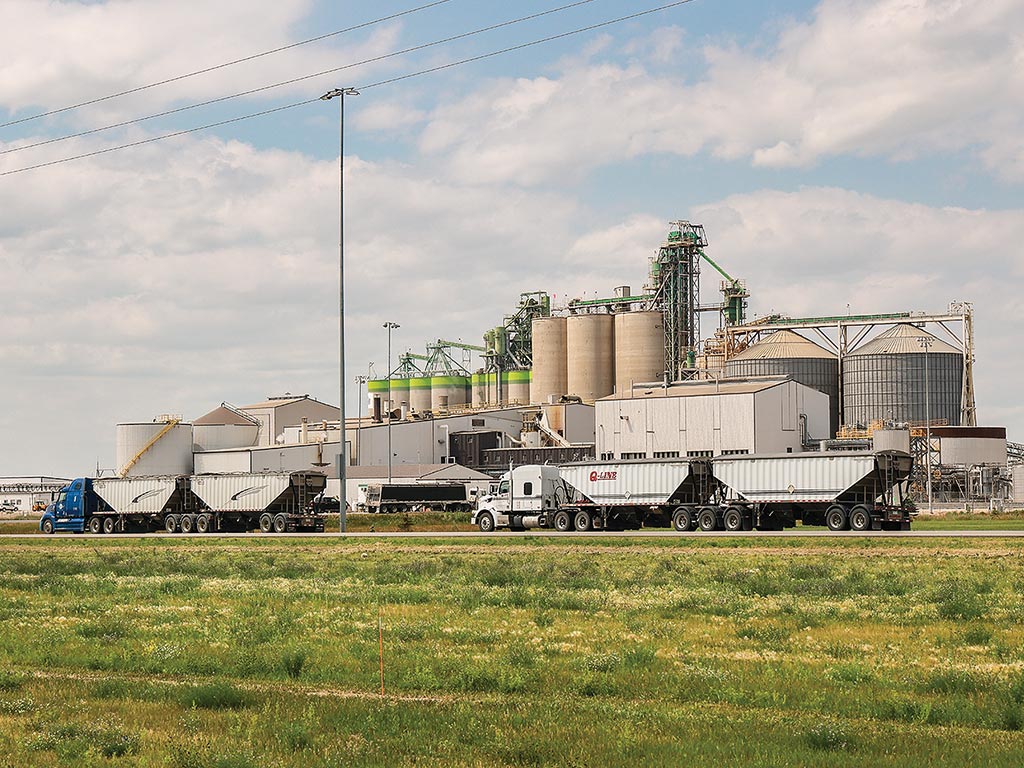Agriculture, Sustainability January 01, 2024
A Sea of Meal
.
Industry scrambles to develop new markets for canola meal.
Is Canada about to be awash in a sea of canola meal?
"Currently we have about 11 million tonnes of canola crushing capacity across our fleet of facilities," says Chris Vervaet, executive director of the Canadian Oilseed Processors Association in Winnipeg, Manitoba. "If everything that's been announced gets built as it was announced in various press releases, we'll see around seven million tonnes of additional capacity that could come online in the next three or four years. That means about 3.5 million tonnes of meal will be hitting the market."
A similar scenario is playing out in the United States with soybean meal, Vervaet says. There are a lot of new soybean crushing plants under construction. Vegetable oil demand is growing due to the biofuel market, but where will all the meal find a home?
"That's a good question," says Brittany Wood with the Canola Council of Canada. "Canola seed has a high oil content, about 45%, but 55% of it is meal. I think it's going to be a good news story because we are seeing long-term markets for meal too."
Canola's biggest advantage as a livestock feed supplement is its high protein content, Wood explains. Typically, it contains about 36% crude protein and has a very desirable amino acid profile, particularly higher levels of methionine compared to its main competitor, soybean meal. This makes it a very desirable feed ingredient for dairy and aquaculture industries.
Currently the number one market for Canadian canola meal is the U.S. dairy industry, particularly in California. It's been a popular feed ingredient in dairy rations due to its high protein content.
There is a solid body of research that shows cattle produce more milk and less methane when canola is included as part of their ration. However, Wood says that market has limited potential for growth because the dairy industry is not growing that quickly and there is a big increase in the amount of soybean meal about to hit the market. At best they hope they'll be able to maintain their current market share.
Above. Canola seed contains about 45% oil and 55% meal, so 3.5 million more tonnes of meal will need to find a home.
"China is the second market where we see canola meal going to; we've seen increased volumes exported to China here over the last five years," Wood says. "A lot is being used by the aquaculture sector there to feed species like tilapia and carp. We are putting a large emphasis on working with companies in the Chinese dairy industry so that we can see more uptake of canola meal in that sector too as more meal becomes available. Canola meal really is a great fit for them."
The Canola Council is also putting a lot of emphasis on developing markets in Vietnam, Thailand, Indonesia, and the Philippines in Southeast Asia, Wood explains. The feed livestock and aquaculture industries are growing rapidly in the region and it's creating a strong demand for high quality protein sources like that found in canola meal. Export markets aren't the only new home options for canola meal. There are new domestic options for it as well.
"Canada consumes somewhere between 500,000 and 700,000 tonnes of canola meal each year," Wood says. "It's pretty broadly used by our livestock industry. Current use of canola meal in our domestic salmon industry is limited due to the high protein needs of this species. However, development of value-added, high-protein canola products may allow for expansion into this market."
"I really believe that we'll find new markets for the meal as it becomes available," Vervaet says. "In the meantime, it's important to keep in mind that increasing the domestic crush capacity is a good news story. We used to ship raw product abroad, now we're finally keeping our processing and all its related spinoff economic activity here at home." ‡
Read More

AGRICULTURE, SUSTAINABILITY
Taking DIY to the Next Level
Pest control developed specifically for your farm.

AGRICULTURE, SUSTAINABILITY
Meet Mr. Maverick
Jon Stevens slays farming myths on this Minnesota farm.



